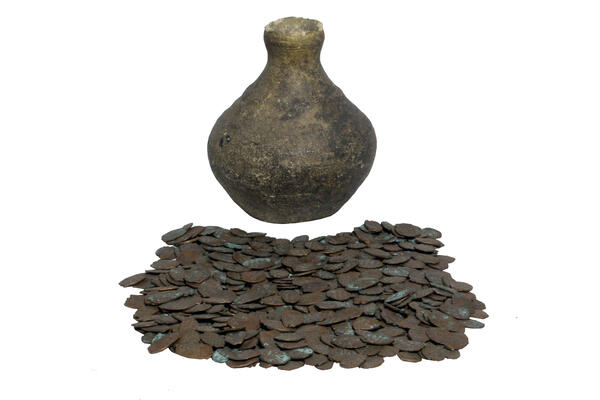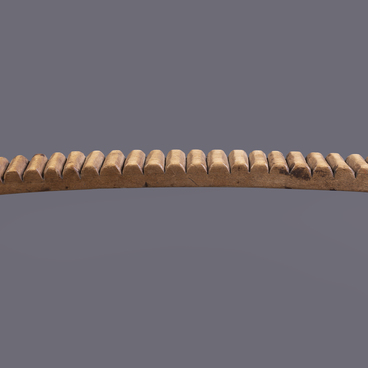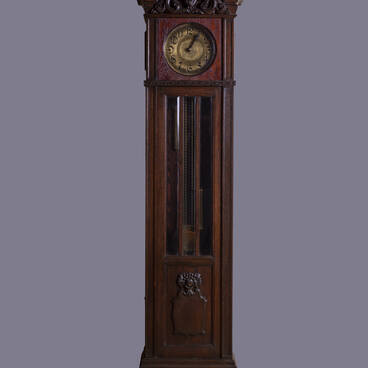A hoard is hidden money or valuables, the owner of which cannot be identified or has lost the ownership of it by virtue of the law. The hoard of the 17th century coins from the period of reign of Alexey Mikhailovich was found in the village of Baranovo, Kursk Oblast, by V. I. Likhachev, a resident of the village, while plowing his plot of land in 1971. The clay jug contained 102 copper kopecks dating from the 17th century.
The coins of the 17th century take visitors back to the period of raids by the Crimean and Nogai Tatars and the construction of the Belgorod defense line. Service class people (cossacks, streltsy, artillerymen, coachmen, blacksmiths, and carpenters) were paid salaries. In addition to the Tatar raids, the settlements were exposed to attacks by Polish and Lithuanian troops. In case of danger, money (e.g., remunerations to be paid) could be buried in the ground.
Baranovo is a settlement in Gorshechensky District of Kursk Oblast about 16 kilometers northwest from Stary Oskol. The lands in the area were owned by the Oskol horsemen and their descendants since the end of the 16th century. The Landrat census of 1719 mentions the village of Baranovo of Pokrovsky parish of Kunya village. The kopecks were most likely minted between 1654 to 1663. During this period a certain stage of monetary reform pursued by Alexey Mikhailovich was underway: a large amount of copper coins was put into circulation.
The reform led to the depreciation of copper money because of its unlimited issuing, accompanied by counterfeiting copper money emerging on the market; it also resulted in rising prices and the impoverished craftsmen, small traders and service class men who received wages in copper money. The financial crisis was exacerbated by the fact that the government refused to take copper money in payment of taxes. The reforms brought about the Copper Riot, which broke out in Moscow in 1662. Soon after it, as well as a series of national disturbances in other cities, copper coins minting was discontinued, “copper” mints closed down, and the minting of silver kopecks resumed. Copper coins were withdrawn from circulation; within a month after the reversal of the reform the Treasury bought back copper kopecks at a rate of 100 copper kopecks for 1 silver one.
The presence of hoards in a particular area indicates the tense political situation in the historical era to which they belong.
The coins of the 17th century take visitors back to the period of raids by the Crimean and Nogai Tatars and the construction of the Belgorod defense line. Service class people (cossacks, streltsy, artillerymen, coachmen, blacksmiths, and carpenters) were paid salaries. In addition to the Tatar raids, the settlements were exposed to attacks by Polish and Lithuanian troops. In case of danger, money (e.g., remunerations to be paid) could be buried in the ground.
Baranovo is a settlement in Gorshechensky District of Kursk Oblast about 16 kilometers northwest from Stary Oskol. The lands in the area were owned by the Oskol horsemen and their descendants since the end of the 16th century. The Landrat census of 1719 mentions the village of Baranovo of Pokrovsky parish of Kunya village. The kopecks were most likely minted between 1654 to 1663. During this period a certain stage of monetary reform pursued by Alexey Mikhailovich was underway: a large amount of copper coins was put into circulation.
The reform led to the depreciation of copper money because of its unlimited issuing, accompanied by counterfeiting copper money emerging on the market; it also resulted in rising prices and the impoverished craftsmen, small traders and service class men who received wages in copper money. The financial crisis was exacerbated by the fact that the government refused to take copper money in payment of taxes. The reforms brought about the Copper Riot, which broke out in Moscow in 1662. Soon after it, as well as a series of national disturbances in other cities, copper coins minting was discontinued, “copper” mints closed down, and the minting of silver kopecks resumed. Copper coins were withdrawn from circulation; within a month after the reversal of the reform the Treasury bought back copper kopecks at a rate of 100 copper kopecks for 1 silver one.
The presence of hoards in a particular area indicates the tense political situation in the historical era to which they belong.



